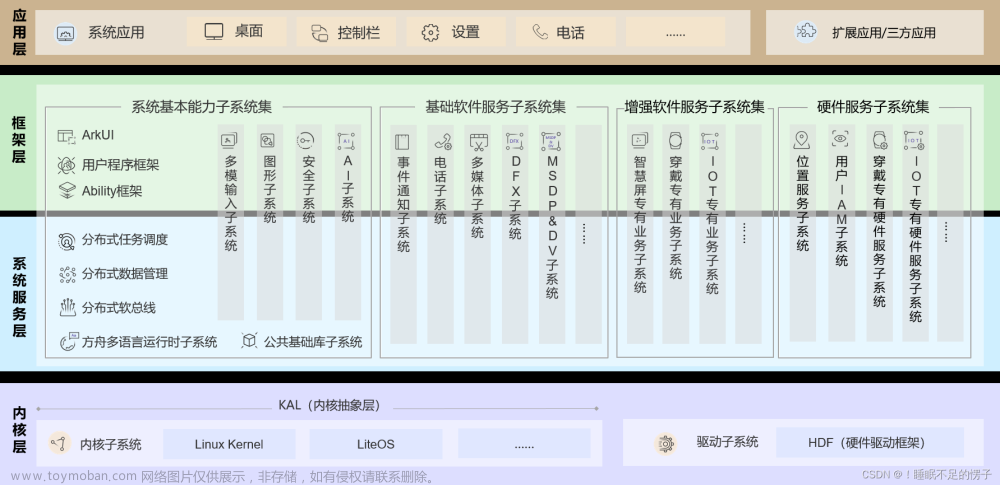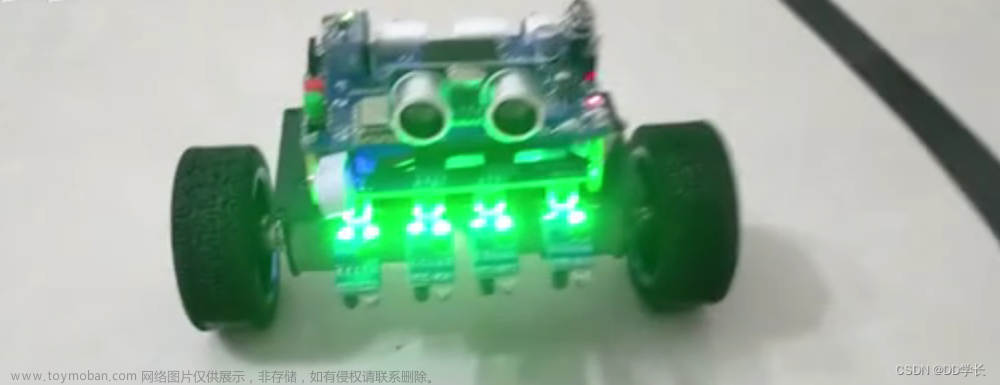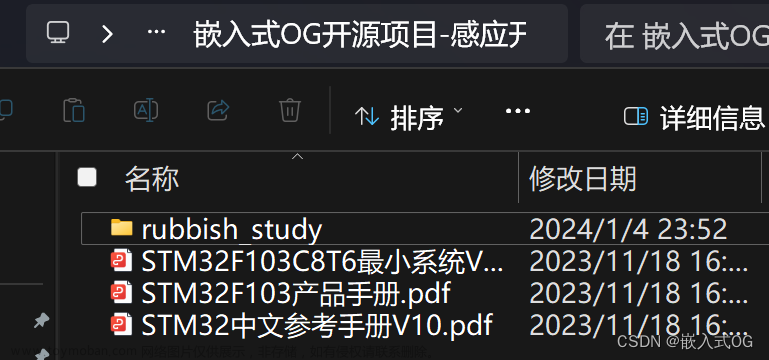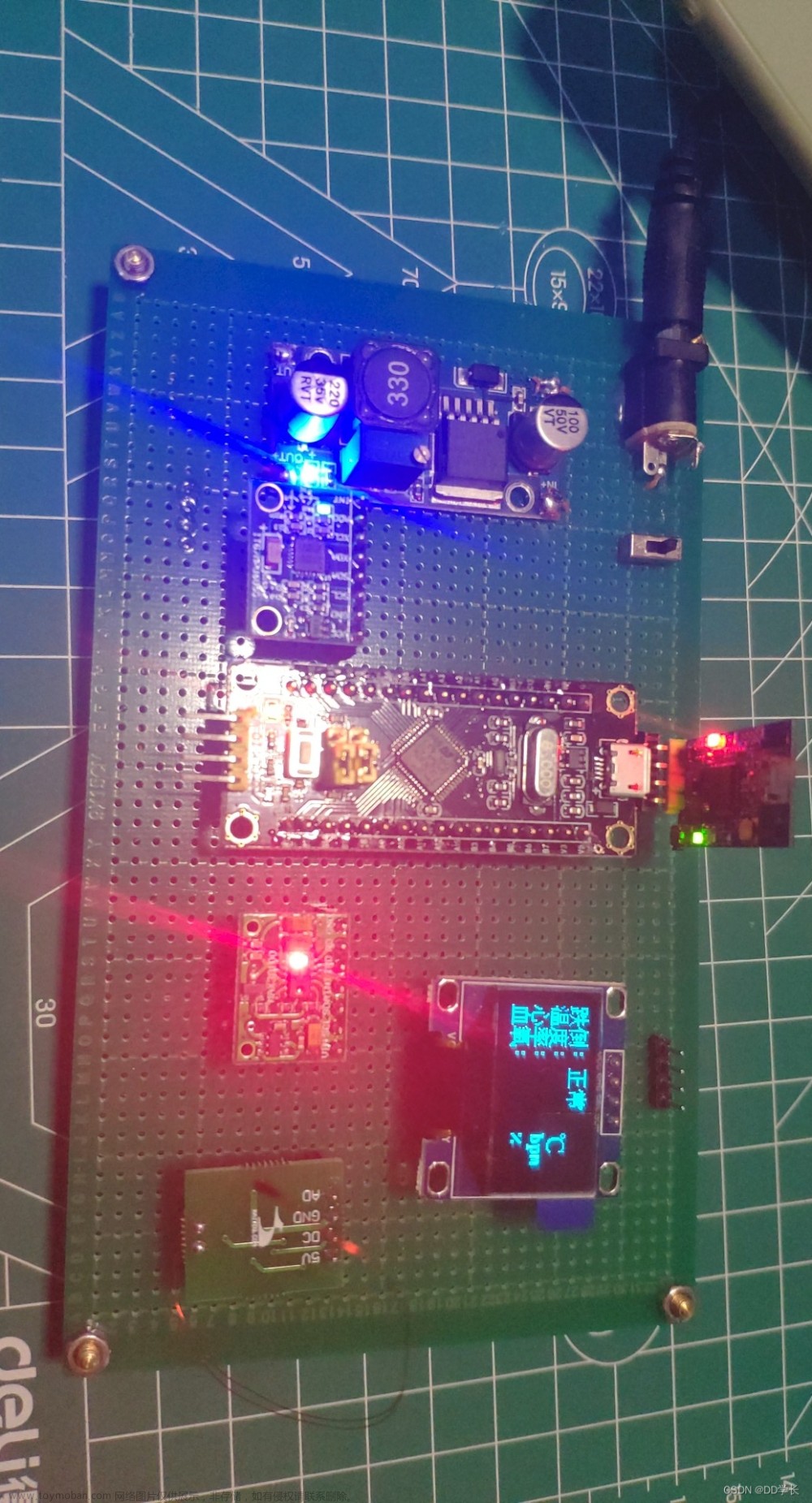简介
MultiButton 是一个小巧简单易用的事件驱动型按键驱动模块,可无限量扩展按键,按键事件的回调异步处理方式可以简化你的程序结构,去除冗余的按键处理硬编码,让你的按键业务逻辑更清晰。
本章使用环境:
正点原子stm32F4探索者
代码工程使用正点原子HAL库实验三-按键输入实验
下载
GIthub地址:https://github.com/0x1abin/MultiButton
配有git环境可以使用以下命令进行下载
git clone https://github.com/0x1abin/MultiButton.git
使用介绍
MultiButton 使用C语言实现,基于面向对象方式设计思路,每个按键对象单独用一份数据结构管理:
struct Button {
uint16_t ticks;
uint8_t repeat: 4;
uint8_t event : 4;
uint8_t state : 3;
uint8_t debounce_cnt : 3;
uint8_t active_level : 1;
uint8_t button_level : 1;
uint8_t button_id;
uint8_t (*hal_button_Level)(uint8_t button_id_);
BtnCallback cb[number_of_event];
struct Button* next;
};
这样每个按键使用单向链表相连,依次进入 button_handler(struct Button* handle) 状态机处理,所以每个按键的状态彼此独立。
按键事件
| 事件 | 说明 |
|---|---|
| PRESS_DOWN | 按键按下,每次按下都触发 |
| PRESS_UP | 按键弹起,每次松开都触发 |
| PRESS_REPEAT | 重复按下触发,变量repeat计数连击次数 |
| SINGLE_CLICK | 单击按键事件 |
| DOUBLE_CLICK | 双击按键事件 |
| LONG_PRESS_START | 达到长按时间阈值时触发一次 |
| LONG_PRESS_HOLD | 长按期间一直触发 |
工程移植
我们将下载好的MultiButton源码中的multi_button.c和multi_button.h文件拷贝到stm32工程目录下的handware中的key文件夹下
然后我们在keil中添加该文件
代码分析
#define TICKS_INTERVAL 5 //ms 轮询间隔时间,也就是时间片
#define DEBOUNCE_TICKS 3 //MAX 8 双击间隔时间片
#define SHORT_TICKS (300 /TICKS_INTERVAL) // 短按时间片
#define LONG_TICKS (1000 /TICKS_INTERVAL) // 长按时间片
然后我们可以看到轮询的函数中是不断的遍历链表
void button_ticks()
{
struct Button* target;
for(target=head_handle; target; target=target->next) {
button_handler(target);
}
}
根据代码我们可以看出来button_start函数就是添加链表节点的函数(那相应的button_stop就是删除链表节点的功能)
int button_start(struct Button* handle)
{
struct Button* target = head_handle; // 头节点
while(target) {
if(target == handle) return -1; //already exist.
target = target->next; // 遍历到最后一个节点
}
handle->next = head_handle;// 环形结构的链表头尾相连
head_handle = handle;
return 0;
}
void button_stop(struct Button* handle)
{
struct Button** curr;
for(curr = &head_handle; *curr; ) {
struct Button* entry = *curr;
if (entry == handle) {
*curr = entry->next;
// free(entry);
return;//glacier add 2021-8-18
} else
curr = &entry->next;
}
}
按键事件驱动枚举
typedef enum {
PRESS_DOWN = 0, // 按下信号
PRESS_UP, // 弹起信号
PRESS_REPEAT, // 重复按下计数,在button结构体变量中repeat存储次数
SINGLE_CLICK, // 单击信号
DOUBLE_CLICK, // 双击信号
LONG_PRESS_START, // 长安信号
LONG_PRESS_HOLD, // 长按期间会重复触发
number_of_event,
NONE_PRESS // 未按下
}PressEvent;
typedef struct Button {
uint16_t ticks;
uint8_t repeat : 4; // 单机次数记录
uint8_t event : 4; // 事件
uint8_t state : 3; // 状态
uint8_t debounce_cnt : 3;
uint8_t active_level : 1; // 触发电平
uint8_t button_level : 1; // 当前按键电平
uint8_t button_id; // 按键id
uint8_t (*hal_button_Level)(uint8_t button_id_); // 按键状态读取函数通过指针数组保存
BtnCallback cb[number_of_event]; // 回调函数数组(注册的回调函数会存在这里,轮询会通过该数组调用)
struct Button* next; // 指向下一个按键的指针(链表)
}Button;
由上分析得知注册按键第一个参数为按键节点,第二个为参数为读取按键电平的函数,第三个为按键触发电平,第四个为按键id定义
void button_init(struct Button* handle, uint8_t(*pin_level)(), uint8_t active_level, uint8_t button_id);
触发事件注册,第一个参数为按键节点,第二个参数为按键事件枚举值,第三个为回调触发函数
void button_attach(struct Button* handle, PressEvent event, BtnCallback cb);
返回该按键节点的触发类型,当我们不使用回调函数方法时可以轮询该函数判断按键事件信号
PressEvent get_button_event(struct Button* handle);
multi_button.c文件中还有一个button_handler函数也就是我们tick函数轮询判断的函数,该函数为实现按键各个事件实现的方法,大家可以自行阅读学习文章来源:https://www.toymoban.com/news/detail-431899.html
完整使用流程
#include "sys.h"
#include "delay.h"
#include "usart.h"
#include "led.h"
#include "key.h"
#include "multi_button.h"
enum Button_IDs {
btn1_id,
btn2_id,
};
struct Button btn1;
struct Button btn2;
uint8_t read_button_GPIO(uint8_t button_id)
{
// you can share the GPIO read function with multiple Buttons
switch(button_id)
{
case btn1_id:
return HAL_GPIO_ReadPin(GPIOE,GPIO_PIN_4);
case btn2_id:
return HAL_GPIO_ReadPin(GPIOE,GPIO_PIN_3);
default:
return 0;
}
}
void BTN1_PRESS_DOWN_Handler(void* btn)
{
//do something...
printf("btn1 press down\r\n");
}
void BTN1_PRESS_UP_Handler(void* btn)
{
//do something...
printf("btn2 press up\r\n");
}
void BTN2_LONG_PRESS_START_Handler(void* btn)
{
//do something...
printf("btn2 press down\r\n");
}
void BTN2_DOUBLE_Click_Handler(void* btn)
{
//do something...
printf("btn2 press up\r\n");
}
int main(void)
{
HAL_Init(); //初始化HAL库
Stm32_Clock_Init(336,8,2,7); //设置时钟,168Mhz
delay_init(168); //初始化延时函数
uart_init(115200); //初始化串口
LED_Init(); //初始化LED
KEY_Init(); //初始化按键
printf("MultiButton Test...\r\n");
button_init(&btn1, read_button_GPIO, 0, btn1_id);
button_init(&btn2, read_button_GPIO, 0, btn2_id);
// 这里只注册了按下和谈起信号,其余的信号也可以自己实验以下
button_attach(&btn1, PRESS_DOWN, BTN1_PRESS_DOWN_Handler);
button_attach(&btn1, PRESS_UP, BTN1_PRESS_UP_Handler);
button_attach(&btn2, LONG_PRESS_START, BTN2_LONG_PRESS_START_Handler);
button_attach(&btn2, DOUBLE_CLICK, BTN2_DOUBLE_Click_Handler);
button_start(&btn1);
button_start(&btn2);
while(1)
{
button_ticks();
delay_ms(5);
}
}
实验效果

我这里使用的方法是回调函数触发,还有一个方式也就是上面说的通过get_button_event来判断按键事件状态文章来源地址https://www.toymoban.com/news/detail-431899.html
while(1)
{
if(btn1_event_val != get_button_event(&btn1)) {
btn1_event_val = get_button_event(&btn1);
if(btn1_event_val == PRESS_DOWN) {
//do something
} else if(btn1_event_val == PRESS_UP) {
//do something
} else if(btn1_event_val == LONG_PRESS_HOLD) {
//do something
}
}
}
到了这里,关于【嵌入式开源库】MultiButton的使用,简单易用的事件驱动型按键驱动模块的文章就介绍完了。如果您还想了解更多内容,请在右上角搜索TOY模板网以前的文章或继续浏览下面的相关文章,希望大家以后多多支持TOY模板网!













